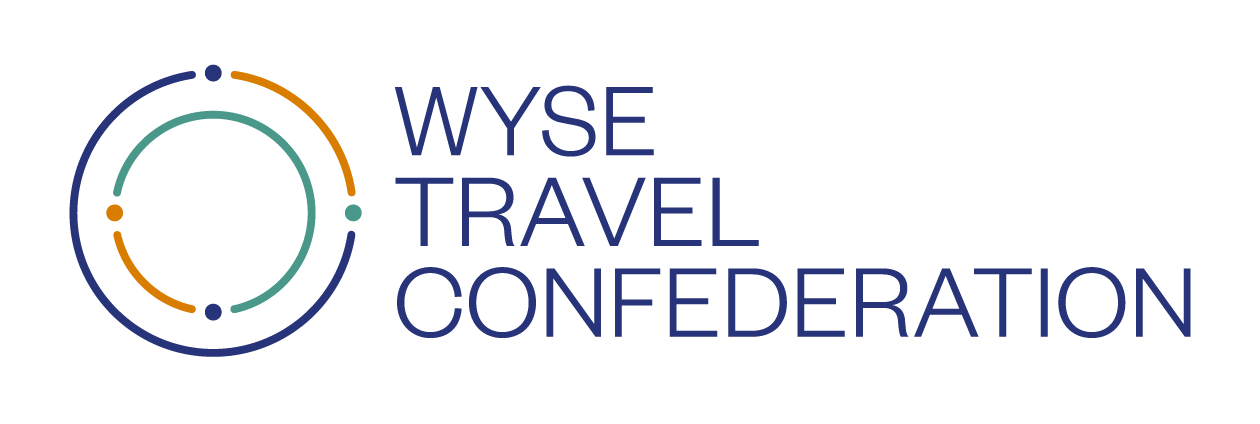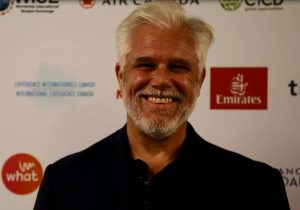News
Manchester, United Kingdom — 22-25 September 2009WYSE Archives
![]()
Global opportunities continuing to expand for Canadian youth
Clark Goodman of International Experience Canada talks with WYSE Travel Confederation about the opportunities that the Government of Canada are developing for Canadian youth to take advantage of in more than 30 partner countries and influencing a ‘culture shift’ in Canadian youth culture. Since this interview was conducted, Canada added an additional destination, Portugal, to the 33 partner countries and territories already available to young Canadians looking for an international experience.
Tell us a bit about who you are and what you do.
My name is Clark Goodman and I’m the Director of International Experience Canada at the Department of Immigration, Refugees and Citizenship Canada (IRCC). I joined IEC after the program was transferred in 2013 from Global Affairs Canada. Since then, IEC has focused on maintaining its bilateral relationships with its partner countries, as well as ensuring that Canadians are aware of, and can benefit from, work and travel opportunities abroad.
I have been in Ottawa for the past 22 years, during which time I have managed a diverse portfolio of files within the Government of Canada including refugees, citizenship, and temporary foreign workers. Prior to joining the civil service, I lived in Toronto, where I worked in the private sector. I grew up in Montreal and am a graduate of Concordia University and the University of Ottawa.
Could you tell us more about International Experience Canada?
International Experience Canada is a program run by the Government of Canada that allows youth to work and travel abroad. We manage 33 bilateral agreements with different countries and territories around the world that facilitate work permits specifically for youth. Youth aged 18-35 are eligible for a work permit for up to two years, depending on country/territory-specific requirements. The agreements are reciprocal in nature meaning that Canadian citizens can apply for a work permit in any of our 33 partner countries/territories to work and travel, and foreign youth can apply to do the same in Canada.
Depending on the terms of the agreement with each country/territory, young Canadians and foreign nationals may have an opportunity to take advantage of one of two types of work permits:
Open Work Permit – more commonly known as Working Holiday, this type of permit allows youth to work for any employer or location for up to two years, depending on the country/territory.
Employer-specific Work Permit – Participants are eligible to apply for an employer-specific work permit to help them gain professional work experience in their field. With this type of permit, youth must have a pre-arranged contract of employment before applying. Students may use this work permit to complete their co-op or internship placements.
International work and travel helps youth gain valuable experiences that contribute to their personal and professional growth. They are able to build global competencies, and gain exposure to new networks, cultures and languages. As well, working and travelling abroad also showcases young Canadians as ambassadors to the world, which may help attract international talent to Canada.
While we don’t have exact data, anecdotally we have heard that youth who take on an IEC experience have had positions in a variety of industries and sectors, including: marketing; journalism and writing; finance; agriculture; hospitality; and travel and tourism. They not only learn technical skills in those industries, but also those soft skills like flexibility and adaptability that all employers – in Canada and internationally – are looking for.
What is the difference between Destination Canada and International Experience Canada?
Destination Canada is responsible for tourism within Canada, by promoting Canada to people abroad and encouraging them come to visit Canada. International Experience Canada is a programme focused on youth mobility and the youth mobility agreements that Canada has with partner countries. While Destination Canada’s focus is on driving visitors to Canada, the International Experience Canada program is both inbound and outbound. We have roughly about 50,000 youth every year that come to visit Canada to work and travel and we have 21,000 Canadian youth who go and work and travel in our 33 partner countries.
How long has International Experience Canada been involved with WYSE Travel Confederation and the WYSTC event?
We’ve been involved with WYSE and WYSTC for many years. I’d say it goes back 8 to 10 years that we’ve been coming to these conferences.
What drew Canada to host WYSTC 2017?
Obviously 2017 was important year for Canada; Canada turned 150 years old. We also thought Montreal would be a great location because Montreal celebrated 375 years as a city.
Working with Destination Canada to support the promotion of Canada as a destination of choice is useful for IEC as well. We were able to help demonstrate to WYSTC delegates from our partner countries the kinds of experiences their youth could have while in Canada – not only the cultural diversity of Canadian cities and urban centres, but also Canada’s truly awe-inspiring nature. While we do not need to aggressively market to international youth, we do want to maintain the relationships with our partner countries and show them the many benefits of an experience in Canada.
It was also a great opportunity to showcase to Canadian organizations the option of IEC for their youth clients and even young employees. IEC can be a valuable tool for learning about the hospitality, travel and tourism industry, as well as leadership development.
From your point of view what does WYSE Travel Confederation bring to the table as an event partner for International Experience Canada?
We think WYSE is a valuable partner for us; they’re leaders in the industry, they understand the youth travel market and for us, our goal is to increase the number of Canadians youth that participate and go abroad through our 33 bilateral agreements.
How was WYSTC 2017 for International Experience Canada?
It was a really successful conference for us. We hosted a seminar to talk about youth mobility and work-integrated learning and had a great turnout and a lot of great questions from the audience. For us, that’s very important because we’re still learning and hosting a seminar and talking to people is a great opportunity to hear from experts in the field.
We’ve had a lot of great discussions with different businesses and organisations that are attending, as well as talking to people at Tourism Australia, for example, about how they market their country to people around the world. As I said earlier, this is an important conference for us to learn from industry professionals and what they think of the youth travel market.
Clearly the Canadian government sees the benefits of youth mobility and has focused on strategic development in this regard – International Experience Canada deals with both inbound and outbound youth visitors, for example. This is unique and exemplary, yet you insist Canada is still learning. What has changed during your service at International Experience Canada and what do you hope to learn about youth travel in 2018?
A number of things have changed during my tenure at International Experience Canada. Over the past four years, the program has focused on raising awareness of IEC and how international experiences help youth gain global competencies. This refocusing of priorities has spurred a lot of engagement and promotional activities geared towards raising Canadian youth awareness and encouraging them to go abroad. We have also learned from key stakeholders about the barriers that prevent youth, especially those from different communities, from taking advantage of this unique opportunity, and we are working with some of those stakeholders to see what we can do to address those barriers. Conferences like WYSTC give us the opportunity to learn from other countries, and from the latest research in the field.
There have even been some significant changes in the area of youth mobility. Whereas traditionally the topic of youth mobility was mainly focused on international students and academic experiences, we are now seeing the scope of this topic expand to include international work-integrated experiential learning opportunities for all young people.
This was made evident most recently by the Canadian Bureau for International Education’s #LearningAbroad campaign, which now includes experiential learning opportunities such as internships and work placements, as well as the recent Global Education for Canadians report, which underscores the importance of studying and working abroad.
These are all very positive trends for youth mobility and over the next few years what we will be seeking from the international youth mobility community is ideas on how we might be able to work together to influence a culture shift in Canada that encourages more Canadians to seek international experiences. As well, we would like to engage with other government officials responsible for tourism, as these officials would understand and appreciate the value of Canadian youth visiting their countries to work and travel.
Canada has 33 bi-lateral agreements as part of its youth mobility scheme – how do such agreements start when it comes to youth mobility? Are there new destinations (or inbound markets) on the horizon for the IEC programme? What can the youth travel industry do to support such agreements?
Given that this program serves a number of different government objectives, including globalizing young Canadians, supporting Canada’s immigration and labour market objectives, and strengthening bi-lateral relations, a number of different considerations factor into Canada’s assessments of potential new Youth Mobility Agreements. Chief among these considerations is the ability of a new agreement to provide reciprocity of opportunities for young Canadians; for example, ensuring that Canadian youth have the opportunity to participate in the labour markets of potential partner countries, removing administrative barriers to allow Canadians to work in those countries, and improving employment opportunities abroad.
We are always exploring ways to improve opportunities for Canadians. In fact, we have recently modernized two of our agreements with Germany and Austria to include additional categories under which Canadians can apply.
We also continue to seek new research and intelligence from the youth travel industry, in terms of where Canadians want to work and travel, which foreign markets and industries offer the most competitive opportunities for Canadians, and how Canadians can translate their international experiences to employable skills.
The Canadian Minister of Youth is also Canada’s Prime Minister, Justin Trudeau. This is a unique situation – what kind of message does this send to Canadian youth?
With the Prime Minister also serving as the Minister of Youth, this sends a clear message across the Government of Canada that issues of importance to young Canadians, such as youth employment, are a priority for this government. This led to the creation of the Prime Minister’s Youth Council in 2016, which was established to advise the Prime Minister on issues such as education, economy, climate change, immigration, and other issues affecting youth. Also created has been a network of youth who have indicated an interest in working with, or being consulted by, government on various policies and programs. IEC has taken this opportunity to tap into the Youth Council and the broader youth network on issues of youth mobility, including how to reach youth to inform them about opportunities abroad, and how to develop a culture shift so that Canadians understand the value of, and embrace, going abroad as other countries do.
You mentioned that there are currently about 21,000 Canadian youth that go abroad through the IEC programme – is there a goal to increase that number? What sort of travel experiences are outbound Canadian youth after?
In recent years, IEC has made significant efforts to encourage greater youth participation in the program by raising awareness of IEC and the importance of international experience, among Canadian youth and their influencers. Although Canadian participation remains relatively low, we have seen an increase in Canadian participation of 17.5%, between 2013 and 2015.
Canadian youth are interested in a variety of experiences. While some may seek travel and adventure, others are interested in gaining international work experience in their area of expertise. In fact, many Canadian institutions have programs which embed a mandatory international work experience into their programs as part of their graduation requirements. These programs range from business to finance to environmental studies.
Research has also told us that our target youth audience are looking for more than just a tourist experience. They don’t just want to have their picture in front of the Eiffel Tower – they want to really experience a country, and its culture. This, as we’ve heard from some former participants, is one of the life-changing advantages of an IEC experience – the ability to immerse into a culture and its labour market.
IEC relies on data from partner countries and territories on Canadian youth participation, which suggests that most Canadian youth visit English- or French-speaking countries, such as Australia, France, Germany, and New Zealand. We also continue to engage with young Canadians through conferences, information sessions at academic institutions, etc. What we are hearing through these interactions is that young Canadians are also interested in exploring new cultures and experiences.
How does IEC reach key outbound and inbound youth through marketing, PR, and student fairs?
In the first year with IRCC, IEC had focused on raising awareness about the program; either through direct contact with youth at student fairs, information sessions with students and faculty, and presentations at conferences to inform those influencing youths’ career and academic decisions.
Over the past year, we also developed more communications products that will help to inform Canadians about these international opportunities. We have updated our website to include helpful information about the value of going abroad, and provided some interesting cultural and labour market facts about our partner countries to help youth decide where they might go. We’ve also included new social media tools, like Facebook and Instagram accounts, so that we are able to reach youth through a mechanism they use; and we encourage youth to share their stories with us on these platforms so that they can motivate others to take that step.
Also, in the last year, IEC’s approach to engagement and promotion takes into consideration the understanding that to increase participation in the program, we must influence a culture shift in Canadians in which gaining international experience is a natural part of youth’s transition from academia to entering the workforce; from within the labour market. This involves working with a large repertoire of stakeholders and targeting youth from a younger age to ensure that younger audiences are able to learn early about the options for personal and professional development through international experiences. We also target youth influencers (e.g. parents, guidance counsellors), to ensure they are equipped with the resources they need to help young Canadians make early and informed decisions.
We also seek out collaborations between organizations that support specific communities, and look at innovations and innovators to explore pilot projects that could support the development of opportunities abroad. For example, we have recently worked with an organization in Canada and one in Australia to put into place an Indigenous-to-Indigenous exchange. We would like to work with more organizations in this way so that we are not only promoting the value of international experiences, but also helping specific communities to gain access to these opportunities.





